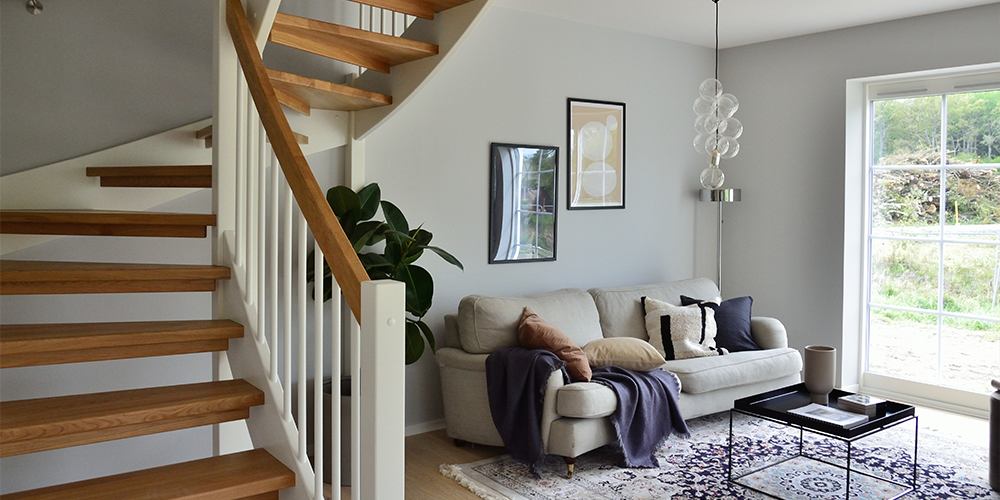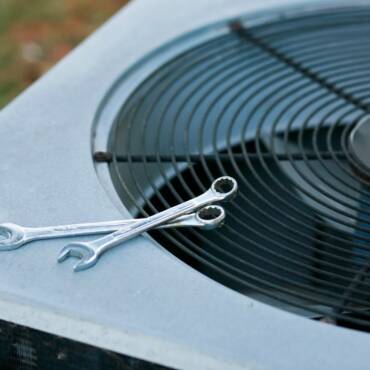Over the winter months, do you ever notice that some areas of your home feel chilly even though the majority of your living spaces seem comfortable? Cold and hot spots can occur for various reasons. They cause discomfort and create unnecessary energy waste that increases your heating bills. “Doc” Dancer Heating & Air explains why they happen as well as how to prevent cold spots in house rooms.
Why Do Cold Spots Occur?
Before we get into how to prevent cold spots in house rooms, let’s start by explaining why these uncomfortable areas happen in the first place. Cold and hot spots are typically caused by issues impacting the home’s HVAC system.
- Gaps, loose connections, and damage to ductwork can cause leaks in the forced air HVAC system’s ductwork distribution system. Heated air is able to leak out of these points before reaching the intended living space. Therefore, less heat arrives in the area.
- Air leaks in the home can cause heat to escape affected areas, leading to cold spots. These leaks can be in the form of gaps and holes around window and door frames, in exterior walls, attic access doors, or even a lack of insulation in a particular area.
- When a home’s heating unit is incorrectly sized, hot and cold spots are common throughout the residence. An undersized unit may struggle to deliver heat to areas farther away from the heater’s central location. An oversized unit heats the home quickly in shortened heating cycles. The unit turns off before delivering adequate heat to all areas of the home.
- An older furnace or heat pump that is in need of replacement will often produce cold spots in the home. Cold spots are common in areas furthest away from the unit’s central location. The heater simply struggles to distribute enough heat to these spaces due to its age, wear and tear, and declining energy efficiency.
- When cold spots are detected, homeowners and their family members typically resort to turning up the thermostat for more heat in order to make that cold space comfortable. This leads to higher energy costs as a central heating system will create heat to deliver across the entire house, even though it is only needed in select areas. Using your furnace or heat pump in this manner can also make comfortable areas too warm, creating more frustration for your family.
How to Prevent Cold Spots in House Rooms
Chilly areas inside rooms or entire rooms that never get warm enough are incredibly frustrating for households. “Doc” Dancer Heating & Air shares how to prevent cold spots in house rooms to spare you and your loved ones that discomfort over the winter months.
- Have ductwork inspected and sealed. Air duct leaks cause 20 to 30 percent energy loss in the average home and are a common cause of cold spots. Because most ducts run in hidden spaces that are difficult to access, it’s best to have an HVAC professional inspect the condition of your ductwork. A blower door test is performed which pressurizes the house to measure leakage in the ducts. If leaks are detected, professional methods can be used to close up duct leaks from the inside, ensuring even the tiniest of holes will be eliminated.
- Seal air leaks around the home. The blower door test mentioned above is also helpful for identifying air leaks throughout the home, not just within the duct system. This diagnostic test as well as the use of infrared cameras can help you pinpoint areas where heat is escaping the home. Air escapes due to a lack of insulation, gaps, cracks, and other openings. Block out the cool air coming inside by sealing air leaks using weather stripping around windows and exterior doors. Use silicone or expanding foam caulk to close up gaps and other openings in the home’s walls, floors, and ceilings. Installing window coverings like shrimp wrap plastic or black-out curtains can also help fix cold spots inside. Add insulation to attics and below floors to improve R-values and help the area better retain heat and keep the cold air out.
- Replace incorrectly sized heating equipment. To prevent cold spots in your home that are caused by a heater that is too big or too small for a home is to replace the unit. A properly-sized furnace or heat pump installed by a trained HVAC technician should be able to deliver adequate heating across your entire residence.
- Upgrade failing heating equipment. If your current furnace or heat pump struggles to deliver heat across the whole home and the issue is caused by a failing unit, the best solution for how to prevent cold spots in your home is to upgrade the HVAC system and have a new furnace or heat pump installed. With a new heater in place, your home will be outfitted with a unit capable of meeting your heating demand across all areas.
End Cold Spots in Your Ft. Wayne Area Home
“Doc” Dancer Heating & Air helps homeowners throughout the Ft. Wayne, IN area with how to prevent cold spots in your home. Our licensed HVAC technicians can assist you with duct inspections and sealing as well as replacing your heating unit. Contact us today to schedule a consultation.
Whether you require installation, repair, or maintenance, our technicians will assist you with top-quality service at any time of the day or night. Take comfort in knowing your indoor air quality is the best it can be with MOE heating & cooling services Ontario's solution for heating, air conditioning, and ventilation that’s cooler than the rest.
Contact us to schedule a visit. Our qualified team of technicians, are always ready to help you and guide you for heating and cooling issues. Weather you want to replace an old furnace or install a brand new air conditioner, we are here to help you. Our main office is at Kitchener but we can service most of Ontario's cities
Source link




Add Comment